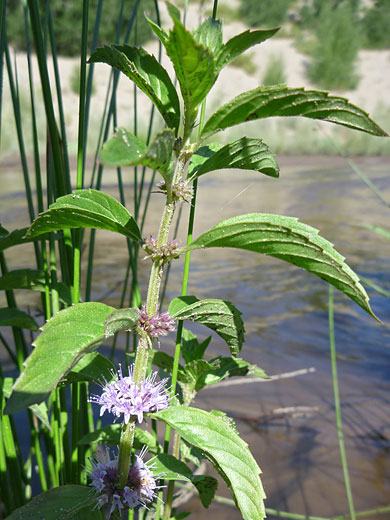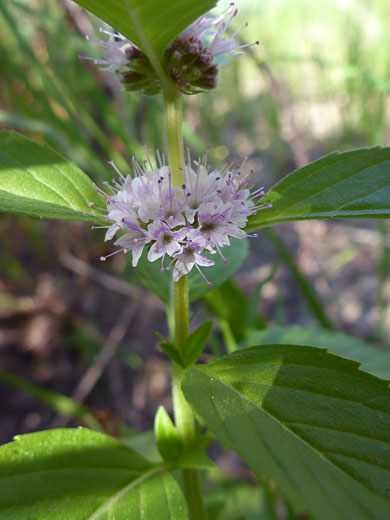Common names:
Field mint, corn mint, wild mint
Family:
Scientific name:
Mentha arvensis
Main flower color:
Range:
All the western states and the northern Great Plains; isolated locations in Texas and Oklahmoa
Height:
Up to 30 inches
Habitat:
Moist locations; lakeshores, streambanks, boggy meadows
Leaves:
Opposite, lanceolate, up to 3 inches long and over an inch wide; large teeth along the edges. On short stalks
Season:
July to September
Like many lamiaceae species, the dense, spherical flower clusters of mentha arvensis form at intervals along the stem, at the leaf nodes, rather than at the top of the stem. Clusters contain several dozen flowers; each has four small, spreading lobes, two stigmas and four protruding stamens topped by dark-colored anthers. Lobes have a light purple interior and whitish edges.
The stems are square in cross section, rigid and unbranched. The large, hairless, toothed, strongly veined leaves have a distinct minty aroma, and the plant has many medical uses in addition to being edible. Several varieties have in the past been recognized, but now are all treated as the same species.
The stems are square in cross section, rigid and unbranched. The large, hairless, toothed, strongly veined leaves have a distinct minty aroma, and the plant has many medical uses in addition to being edible. Several varieties have in the past been recognized, but now are all treated as the same species.
All Contents © Copyright The American Southwest | Comments and Questions | Contribute | Site Map










